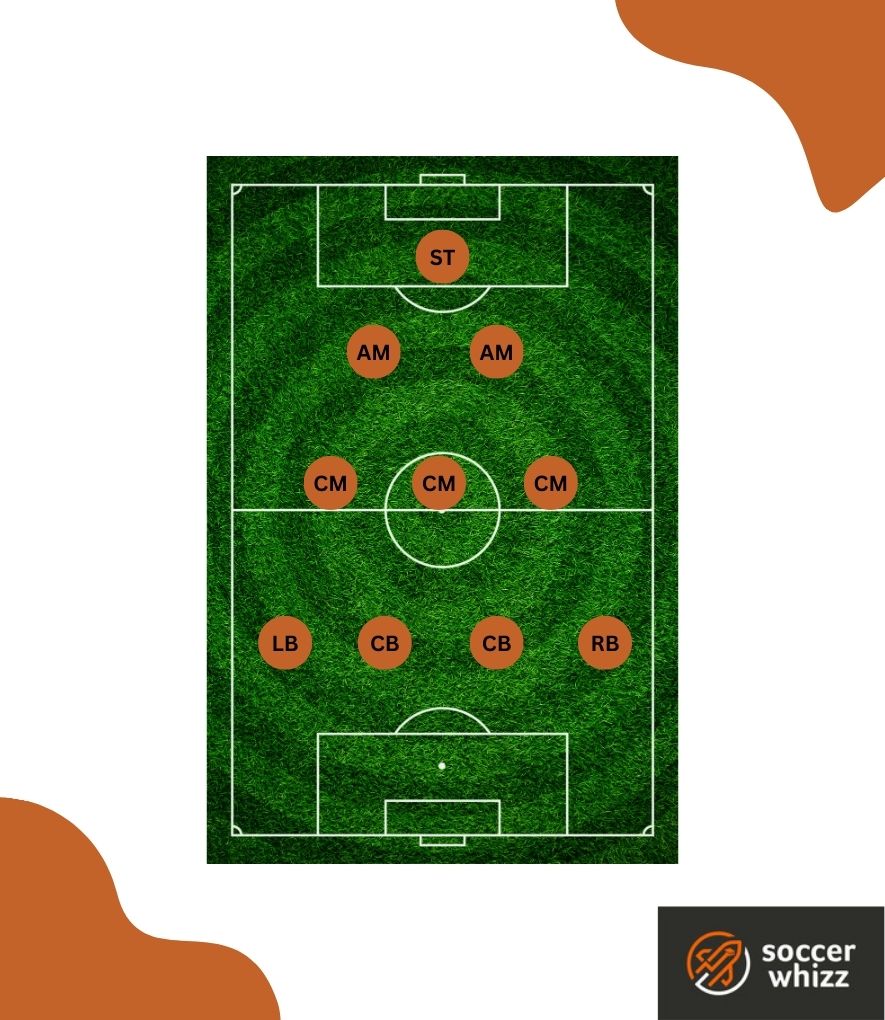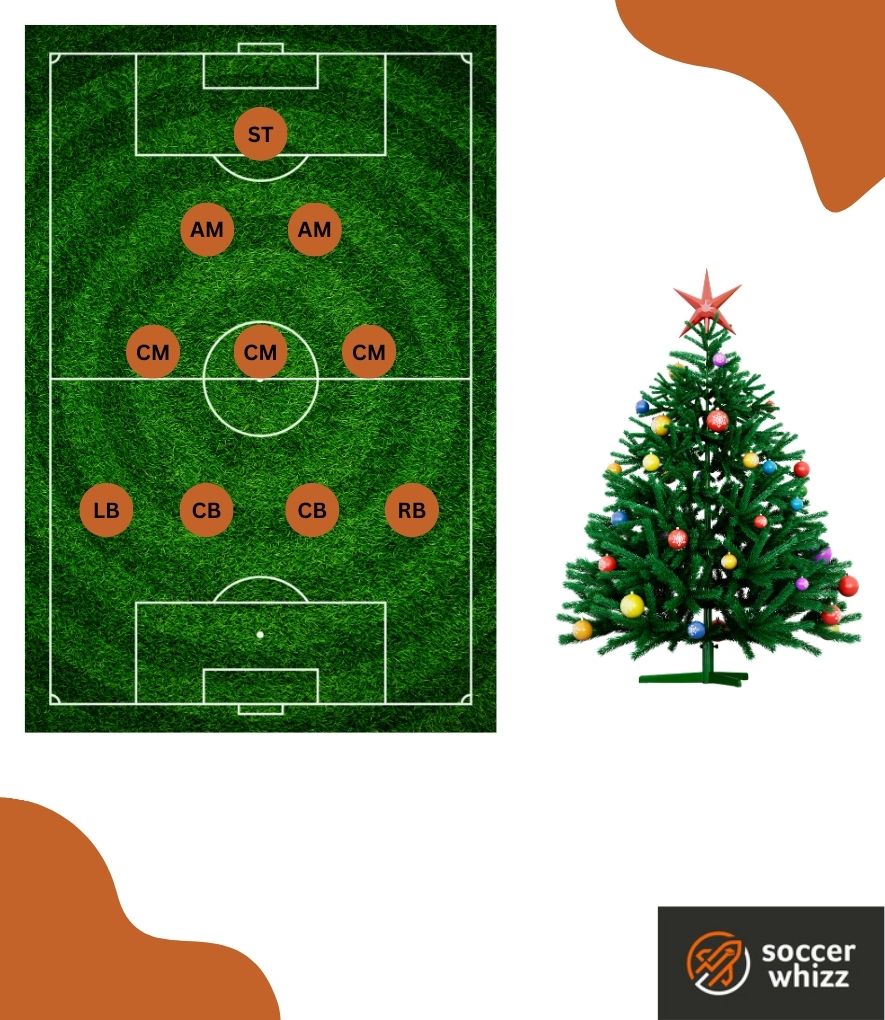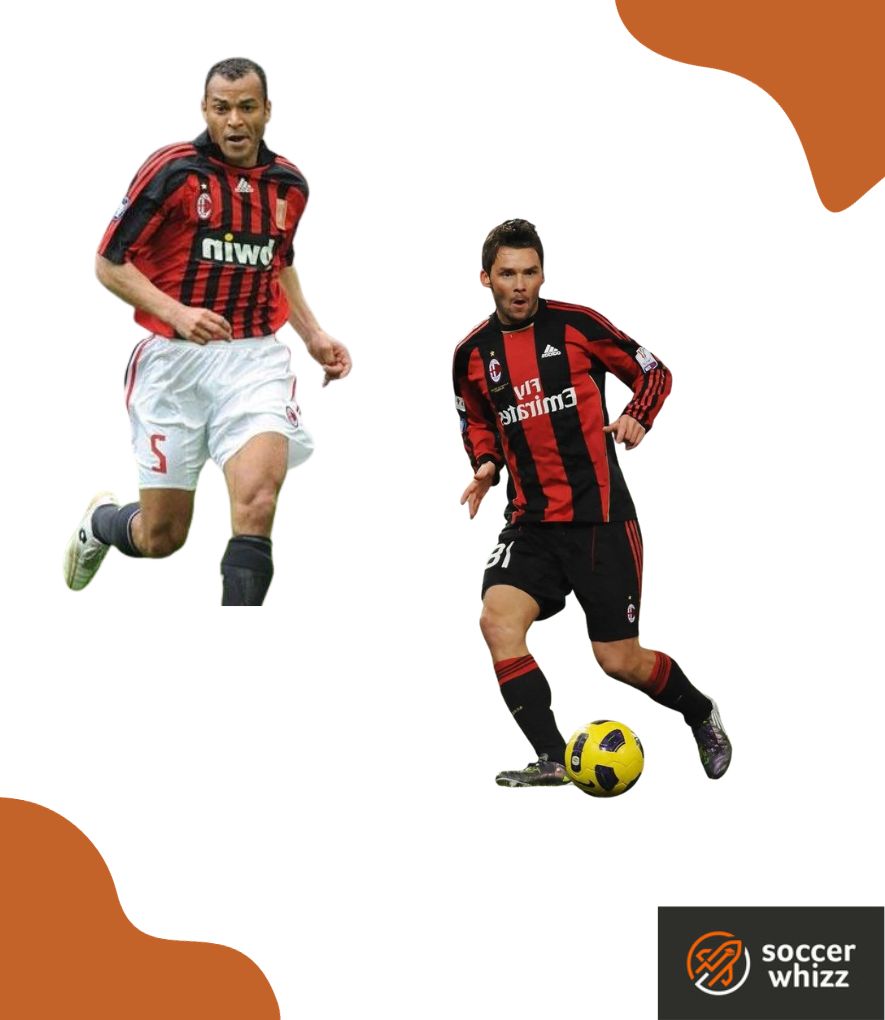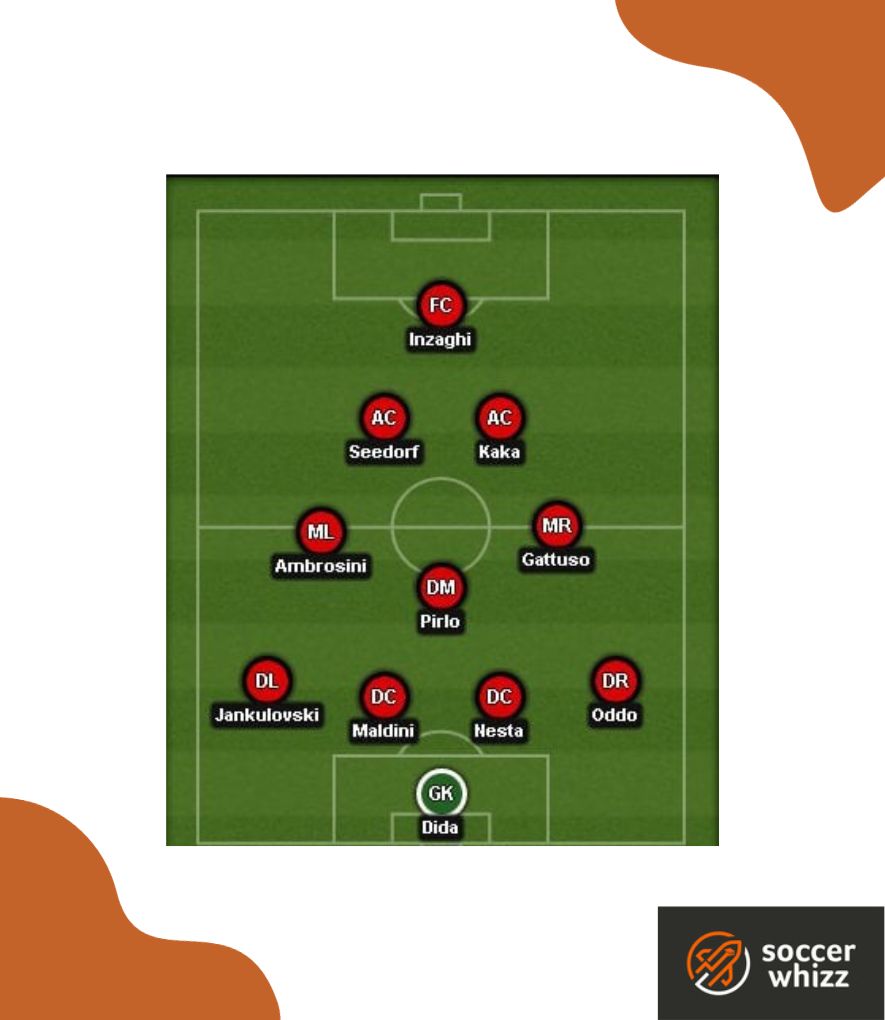In the ever-evolving world of soccer tactics, coaches constantly seek innovative ways to outmanoeuvre opponents and gain a competitive edge.
Among the diverse array of formations at their disposal, the 4-3-2-1 stands out as a formation that has captured the attention of soccer enthusiasts and strategists alike.
With its unique structure and adaptability, the 4-3-2-1 has emerged as a potent and versatile tactical setup that offers teams the ability to control the game with precision and finesse.
In this comprehensive guide, we delve deep into the intricacies of the 4-3-2-1 soccer formation, exploring its origins, key principles, and tactical nuances that make it a formidable force on the global stage.
From its historical evolution to its practical implementation on the pitch, we unlock the secrets behind its growing popularity among coaches and players worldwide.
How does the 4-3-2-1 formation work?
The 4-3-2-1 formation is a variant of the 4-5-1, strategically designed to strategically position players in crucial areas of the field, with a particular focus on a compact and robust midfield presence.
This formation includes a solid back four comprising two full-backs and two center-backs, reinforced by three central midfielders with defensive responsibilities, flanked by two advanced creative midfielders, and spearheaded by a lone central striker.

While not as commonly used as some other formations, the 4-3-2-1 remains more popular than one might expect.
Its reputation as a reasonably defensive setup stems from its emphasis on structured and rigid positioning, including the rare employment of a 3-man holding midfield.
However, this strategic approach is also lauded for its ingenuity in creating a formidable and capable midfield unit, capable of effectively handling even the most challenging oppositions.
Why is the 4-3-2-1 sometimes referred to as a “Christmas tree” shape?
The 4-3-2-1 formation is commonly known as the “Christmas Tree” due to its distinctive appearance on a team sheet.

This tactical setup features four defenders, three holding midfielders, two attacking midfielders, and a solitary striker, forming a fluid and dynamic triangular shape, reminiscent of the outline of a Christmas tree, which explains the origin of its nickname.
What are the strengths of a 4-3-2-1 formation?
Although some critics have raised concerns about the potential rigidity of the 4-3-2-1 formation, its true flexibility shines through when executed effectively.
This is especially evident in the advanced areas, where the lone striker takes on a multifaceted role, not only running the channels but also dropping back to contest aerial balls, enabling the two attacking midfielders (AMs) to occupy central positions.
For attacking midfielders, the responsibilities encompass attacking the box or providing width by floating between various advanced positions, keeping opposition defenders on their toes.
At times, they may drop deeper, allowing the deeper-lying playmakers behind them to take charge of leading attacks.
Central to the Christmas tree shape is the three-man holding midfield, a crucial aspect of the formation’s success.
Each of these players fulfills pivotal roles: the deep-lying playmaker, stationed at the heart of the midfield, acts as a pivot, initiating attacks, distributing precise passes, and seamlessly connecting the defense, midfield, and attack.
Renowned players like Andrea Pirlo epitomize this soccer position, significantly contributing to the widespread adoption of this deep-lying playmaker role within Milan’s system.
Simultaneously, the other two midfield counterparts bring tough tackling, defensive discipline, and tactical prowess to the team.
What drawbacks is a 4-3-2-1 shape likely to have?
The Christmas tree formation presents a significant challenge, primarily due to its narrow nature, lacking conventional wingers to exploit wide areas of the pitch.
Instead, the focus of the two central attacking midfielders (AMs) lies in attacking through the middle and the half-spaces on either side.
To address this limitation, teams employing the 4-3-2-1 formation require top-quality full-backs who possess the ability to provide attacking width by pushing forward and delivering crosses into the box.
Milan’s success with the Christmas tree formation was partially attributed to exceptional players like Cafu and Marek Jankulovski, who excelled in these roles.

However, without world-class players of this caliber, the formation may struggle to function optimally.
Additionally, the lone striker in the 4-3-2-1 system faces an arduous task.
Not only must they battle with opposition defenders and make runs into channels, but they are also responsible for linking up with the midfielders, dropping back, and creating space for the advancing attacking midfielders.
Finding a strong, pacey, and versatile striker, akin to Karim Benzema’s brilliance at Real Madrid, is crucial for unlocking the formation’s full potential.
More so, midfield congestion can pose a challenge for teams using the 4-3-2-1 formation.
With a central midfield organized into two blocks of five, intelligent movement and understanding of each other’s roles become essential to avoid cramped areas and blocked passing options.
Midfielders, particularly the two attacking ones, should actively seek to spread out and exploit wide spaces to counteract this tendency.
Which soccer teams were successful playing the 4-3-2-1?
Here are a few examples:
1. AC Milan
Ancelotti found the ideal solution in the 4-3-2-1 soccer formation to accommodate an array of midfield talents within the team.

Fielding a formidable midfield 5 comprised of Pirlo, Gattuso, Ambrosini, Kaka, and Seedorf would have been nearly impossible using conventional formations.
However, the 4-3-2-1 provided the perfect platform to synergize the defensive and offensive prowess of these exceptional players.
The tactical brilliance of the 4-3-2-1 formation served as the backbone for Milan’s triumphs in the Champions League, securing prestigious victories in 2003 and 2007.
Milan’s success with Ancelotti’s formational innovation was exemplary, demonstrating the effectiveness and adaptability of the Christmas Tree setup.
Beyond Milan, Ancelotti’s revolutionary approach to the 4-3-2-1 formation had a far-reaching impact, revolutionizing tactical thinking across the football landscape.
His creative use of the formation showcased its potential to unlock the full potential of talented midfielders, inspiring other teams and coaches to explore its possibilities.
2. Real Madrid
During his two remarkably successful tenures at Real Madrid, Ancelotti frequently employed the 4-3-2-1 formation.
The team’s French forward, Karim Benzema, proved to be the perfect fit as the central striker, showcasing his prowess in this tactical setup.
Furthermore, Luka Modric stepped into the deep-lying playmaker role with remarkable finesse after Pirlo’s retirement, earning recognition with the prestigious 2018 Ballon D’or award along the way.
The impact of Ancelotti’s tactical genius extended beyond his time at Real Madrid, inspiring other illustrious coaches like Zinedine Zidane, a three-time Champions League winner with the club, to adopt the 4-3-2-1 formation in recent years.
This tactical continuity not only reflects the formation’s enduring relevance but also pays tribute to the profound influence of Ancelotti’s approach on some of the game’s most accomplished tacticians.
3. England
Terry Venables, an English football manager and former player, is known for his tactical acumen and innovative approach to the game.
During his time as the manager of the English national team, he implemented the 4-3-2-1 formation, which is also known as the “Christmas tree” formation.
Venables utilized the 4-3-2-1 formation effectively during the UEFA Euro 1996 tournament, which was held in England.
The formation was tailored to suit the strengths of the players in the squad and to maximize their attacking potential while maintaining defensive solidity.
Concluding thoughts
All in all, the 4-3-2-1 formation, also known as the “Christmas tree,” stands as a testament to the strategic ingenuity and adaptability within the world of soccer tactics.
Through its distinctive triangular shape on the team sheet, this formation has offered coaches and players a versatile canvas to craft their own unique playing styles, emphasizing the balance between defensive solidity and attacking flair.
While the 4-3-2-1 formation may not be as commonly used as some other tactical setups, its versatility and potential for strategic innovation have proven that it remains a formidable option for teams seeking to control the midfield, exploit spaces, and create goal-scoring opportunities.
Should you wish to have a read of similar four-defender shapes, then have a look at our detailed analysis of the 4-2-4 soccer formation, or our comprehensive breakdown of the 4-3-3 shape.
If you enjoy the content that I create and would like to buy me a coffee, then I’d really appreciate it!
Any money that I earn through this donation will be re-invested into more content for this website.
Additionally, by sending in a donation you’ll also receive a copy of my recently released 190+ page eBook on Soccer Ball Care, as well as be subscribed to our mailing list where you’ll be regularly informed on the latest developments concerning the Soccer Whizz blog.
- Future Icons: Europe’s Emerging Midfield Maestros Set for Glory - December 4, 2023
- Kickstarting a Revolution: How Soccer Transformed the United States Over the Last Four Years - October 7, 2023
- 4-1-4-1 Soccer Formation [Analysis] - September 23, 2023

